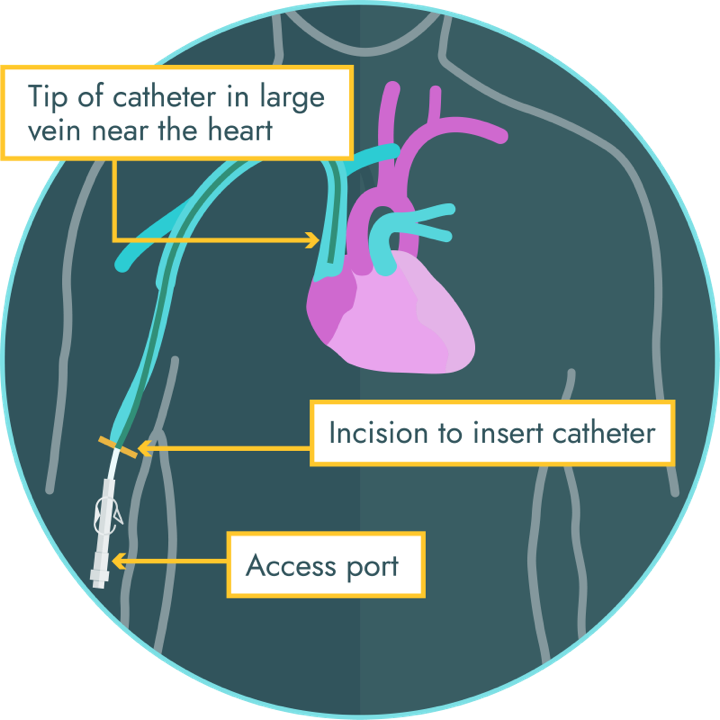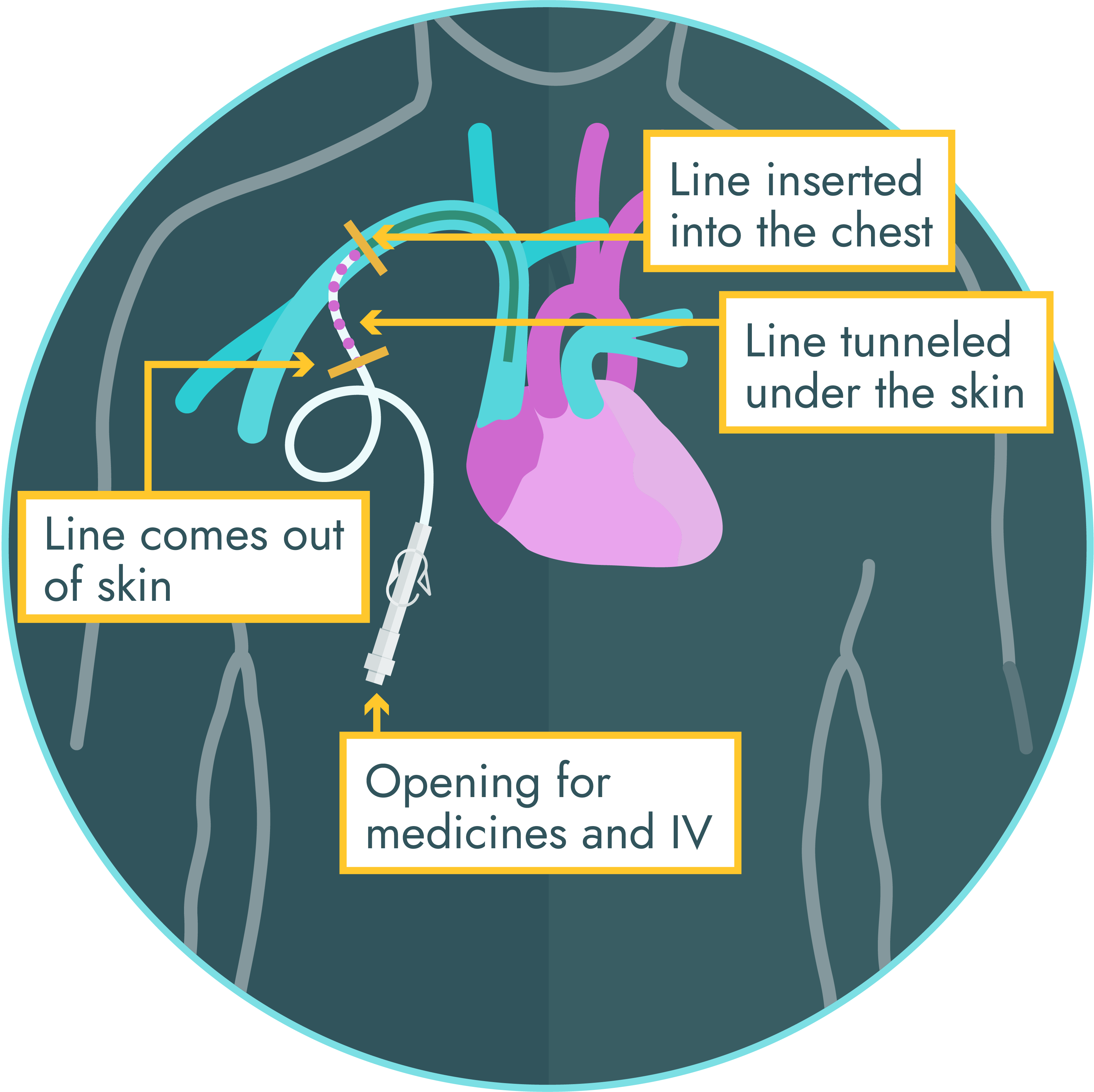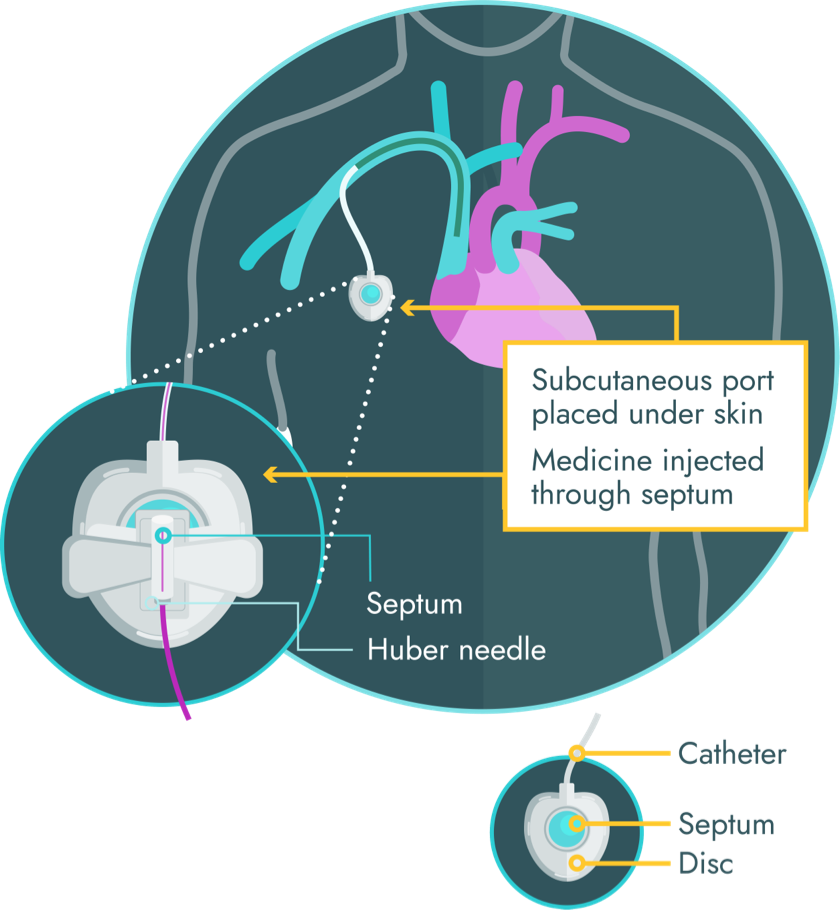 Preparing for Treatment
Preparing for Treatment
Preparing for Treatment
Preparing for Treatment
It is likely that your child has never been in the hospital before being diagnosed with neuroblastoma. You may not know what to expect, so the idea of starting therapy could bring up a lot of questions for you and your family. Here you can find answers to some of the questions you may be asking and guidance on preparing for treatment.
Select a topic to learn more and start preparing for treatment.
How will my child receive treatment?
The most common ways your child may receive treatment are:

By mouth (a pill or liquid to swallow)

Into a vein (intravenously or IV) through a central line

Injection (a shot given into a muscle or under the skin)
What is a central line?
A central line is a semipermanent catheter that provides a way for your child’s healthcare team to deliver chemotherapy and other medicines intravenously (into a vein). The central line is surgically placed in your child’s body and connects directly to a central vein above the heart. The central line allows for:
- Multiple therapies to be given at the same time including chemotherapy and IV fluids
- Supportive care measures to be given quickly, such as pain medication, antibiotics, or IV nutrition
- Blood to be drawn when needed without your child needing additional needle pokes
The central line will stay in place throughout your child’s treatment journey. There are several types of central lines that may be placed, depending on your child’s anticipated treatment.
Select a type of central line to learn more about how it's placed.
When and where will my child receive treatment?
The frequency of treatment will depend on your child’s treatment plan. Treatment can be every day, every week, or every few weeks. Treatment is usually divided into cycles, which will allow your child time to rest and recover between treatments. Children with high-risk neuroblastoma will have multiple cycles and phases of therapy. This will usually last for about 18 months.
The majority of your child’s treatments will take place in the hospital or oncology clinic.
 Oncology clinic visits
Oncology clinic visits
Oncology clinic visits
Your child may have many clinic visits during their treatment. Often, they meet with an oncologist or advanced practice provider (like a nurse practitioner) who will monitor your child’s physical condition and labs. The clinic team will provide consistency, and work together to coordinate your child’s treatment journey. Other reasons your child may go to the clinic include:
- Blood or platelet transfusions
- Short chemotherapy infusions
- Procedures to evaluate treatment
It may be helpful to bring a notebook to each visit. Write down questions to ask and take notes, so you can remember important information.
Hospital stays
Your child may need to stay in the hospital to receive treatment. The length of the stay will depend on the treatment regimen and how your child is doing. If available, request a visit from a Child Life Specialist to help your child learn more about what to expect, and how to deal with the stresses of illness and hospitalization. Read more about the role of Child Life Specialists in your child’s healthcare team.
Your child will be closely monitored before, during, and after each treatment. Vital signs, such as temperature, blood pressure, and heart rate, are checked. Blood work may also be checked. Along with treatment medications, like chemotherapy, your child may be given medications and fluids to help prevent side effects. Sometimes, you may end up staying in the hospital longer than you planned so it helps to be prepared. Find more information on side effects and supportive care during treatment.
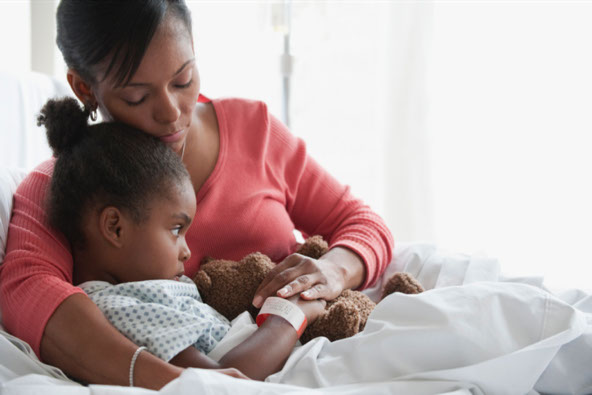 Hospital stays
Hospital stays
What should I bring to the hospital?
Many parents have a bag packed for hospital stays at all times. This is a helpful way to be prepared for unplanned hospital stays, such as when your child gets a fever. Parents often recommend packing:
Managing home life
Getting used to a new “normal” can be difficult at first. Your entire family may be impacted by the new schedule of clinic visits, chemotherapy admissions, and unexpected hospital stays.
Staying organized
You may feel exhausted by all the new information you get. Here are a few tips that other caregivers and families have found useful in helping them stay organized and prepared at each step.

-
Use a calendar
- Create a family calendar to help you keep track of a busy schedule. Understanding the order of events in small timeframes can help you to plan ahead before clinic appointments and hospital admissions. It may also help you to anticipate when you may need to take time off of work and schedule childcare for siblings

-
Keep treatment records and notes
- A treatment journal or notebook may help you remember tests, procedures, treatments, medications, and side effects. It is also a good place to write down questions for your oncologist. Learn how to start tracking your child's treatment .

-
Ask for help
- Simple everyday responsibilities like cooking, taking care of a pet, or driving children to school may now be interrupted. What type of support system do you have? Do you have family nearby? Do you have community support, such as belonging to a religious organization?
- Don’t be afraid to ask for help from family, friends, or the community to help manage the day-to-day. The reality is that most people want to help but don’t know how. The neuroblastoma journey is a hard one to go through alone. Having a support system can help lighten the heavy load
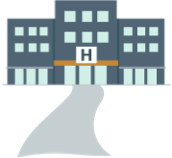
-
Plan for stays away from home
- If your child requires treatment at a hospital in another city then you may find yourself away from home, and even staying overnight at times
- Discuss roles with your loved ones early on. This can help with sharing the responsibilities of being household caretaker and caregiver for your child. In some instances, it may be helpful to have a short list of family or friends who you trust to watch over your other children
 Managing neuroblastoma treatment costs and insurance
Managing neuroblastoma treatment costs and insurance
Managing neuroblastoma treatment costs and insurance
The cost of cancer treatment can often be a source of stress for families. Your oncology social worker may be able to help address your concerns.
